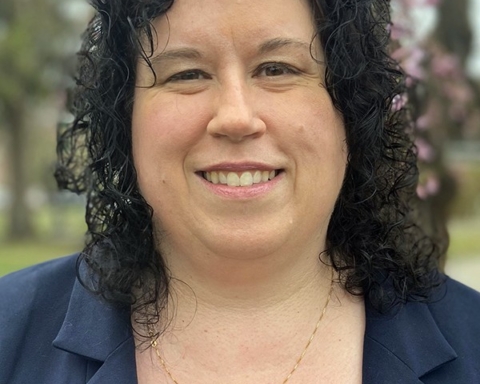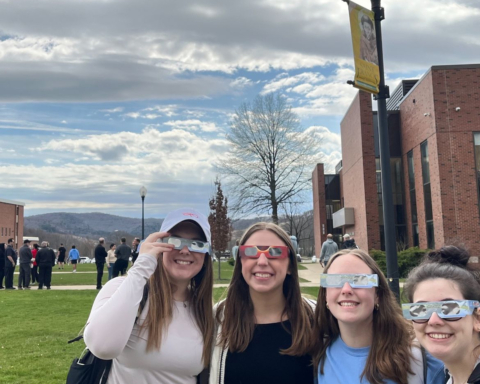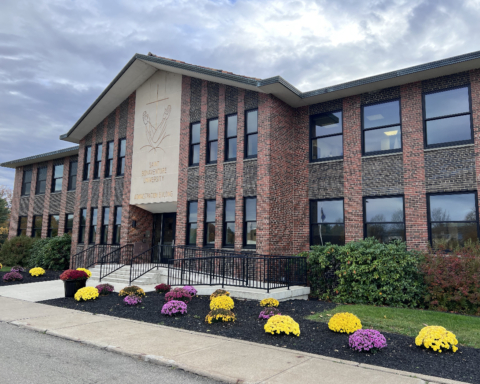A group of schoolwork for assorted subjects
David Scibilia/ The BonaVenture
BY: CIARAN CONNEELY, CONTRIBUTING WRITER
Alexander Obie sat in a statistics class at St. Bonaventure University, taking notes on the lecture material. Obie noticed the professor slowed down during the lecture, prompting Obie to look up from his notes.
Obie scanned the faces of the 90 students in the section, gauging at the level of comprehension from the students. Seeing puzzled looks on students’ faces, Obie made a mental note to go back to that topic.
“If I see the level of comprehension was low, that’s a big gold star right there in my notes. Most of the time, stars turn into questions I pose on the PowerPoints I make,” said Obie, a senior accounting major.
Obie didn’t make the PowerPoint for himself. He made it for the students who attend the Supplemental Instruction sessions he hosts. Obie’s sessions meet every Thursday from 5:30 p.m. to 6:30 in Room 103 Bonaventure’s school of business.
In 1973, the University of Missouri-Kansas City created Supplemental Instruction, also known as SI, to help students in high-risk courses, according to the International Center for Supplemental Instruction at the University of Missouri-Kansas City. SI has been implemented by hundreds of universities across the country as well as universities in other countries, according to the center at UMKC.
Bonaventure first implemented SI in the 1990s, according to Maggie Rosenberg, associate director for academic support.
“In the way I was trained on it, and the way I’m trying to run it now, is that we should only offer SI for classes that have a DFW rate of about 15 to 20% or higher,” said Rosenberg. The DFW rate refers to the rate students at the end of a semester received a D, an F or withdrew from a class.
Student SI leaders conduct each of the 16 SI sessions available at Bonaventure, said Rosenberg. Each SI session meets once per week for an hour, with the meeting times determined based on the availability of students, said Rosenberg.
Rosenberg said SI sessions encourage student collaboration rather than directly giving answers to questions.
“The idea is that the SI leader is there as, yes, a resource for the class, but they’re more the facilitator of the session. They’re trying to encourage the students to work together,” said Rosenberg. “So if I’m the student, I asked you, the SI leader, a question, you don’t actually answer me back directly. You might say, ‘That’s a great question. Who knows?’” said Rosenberg.
“SI leaders have to have at least a 3.0 cumulative [grade point average]. They have to have room in their schedule in order to go to the class, even though they’re not registered for it,” said Rosenberg.
Professors said they don’t look only at students’ GPA’s when recommending SI leaders.
“If they were kind of dominant among a group, then I would not choose those people, because I want them to be more helpful and kind of open to the students’ suggestions if they’re running Supplemental Instruction sessions,” said Linda Pesciotta, visiting assistant professor of biology.
“Sometimes it can be really helpful to have a student who we know was really working for their grade when they were in the course. Like, for example, by asking questions in class and coming to office hours,” said Karie Altman, assistant professor of biology.
SI student leaders said they form their session plans based on the material covered in the classes they sit in on.
“I pretty much just take what we’re talking about in class, and I make a note of how much I want covered. Usually, we’ll go through the session chronologically of what’s in my notes,” said Victoria Byrne, a junior accounting major and SI leader for macroeconomics.
“So, the professor usually posts practice essay questions for the upcoming exam once they start a unit. Usually, I’ll look at those essay questions and I’ll try to see which of those essay questions pertain to what’s being covered in class that week. Then I’ll go over questions like that,” said Tharini Nagarkar, a junior health and society major and SI leader for biology.
Students and professors suggested ways to increase SI attendance.
Byrne said she began reviewing three out of the 10 weekly quiz questions for her macroeconomics SI session to motivate more students to attend.
Scott Simpson, chairman of the department of chemistry, said comparing grades of students attending SI to grades of students not attending SI could increase attendance, by quantifying the relationship between SI attendance and students’ grades.
“So, generally speaking, if students go consistently to SI, so probably more of the sessions than not, they’re more likely to get anywhere from a third to a half grade higher than they anticipated,” said Rosenberg.







